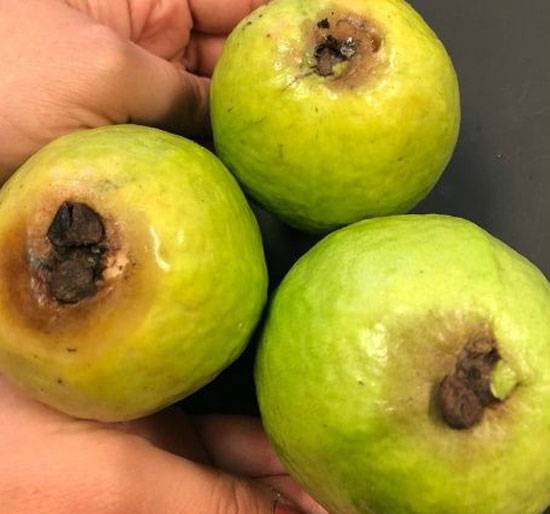Guava
Stylar End Rot

Phomopsis psidii
Fungal Disease

Phomopsis psidii
Fungal Disease

Phomopsis psidii
Fungal Disease
Fruit rot in guava is a serious issue that affects both preharvest and postharvest fruits, leading to significant economic losses.
Symptoms:
- Initial Signs: Discoloration begins near the base of the fruit, below the calyx.
- Progression: The discolored area expands as the fruit ripens, turning dark brown and soft, with a "water-soaked" appearance.
- Flesh Damage: The inner flesh begins to rot along with the peel discoloration.
- Advanced Symptoms: Affected fruit shrinks, develops concentric wrinkles, and eventually becomes covered with small, dark fruiting bodies (pycnidia).
- Impact: Reported losses in guava orchards can range from 10% to 60%.
Disease Cycle and Epidemiology:
- Susceptibility: Wounded fruits are more prone to infection.
- Optimal Conditions: High temperatures (28°C to 31°C) and extended periods of wetness favor disease development.
- Quiescent Disease: The infection occurs in the field, but symptoms often manifest postharvest.
- Inoculum Source: Infected, mummified fruits left on the tree can serve as inoculum for the next season.
- Other Infections: The fungus Phomopsis psidii can also cause twig blight, indicating an endophytic phase in its life cycle.
Management:
- Remove Infected Fruit: Regularly remove infected fruits to reduce disease pressure.
- Plant Spacing and Pruning: Increase plant spacing and selectively prune to enhance air circulation and sunlight exposure.




